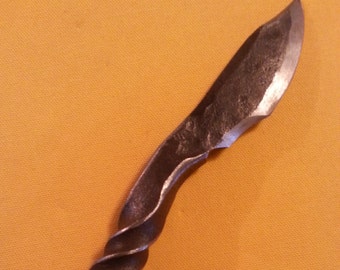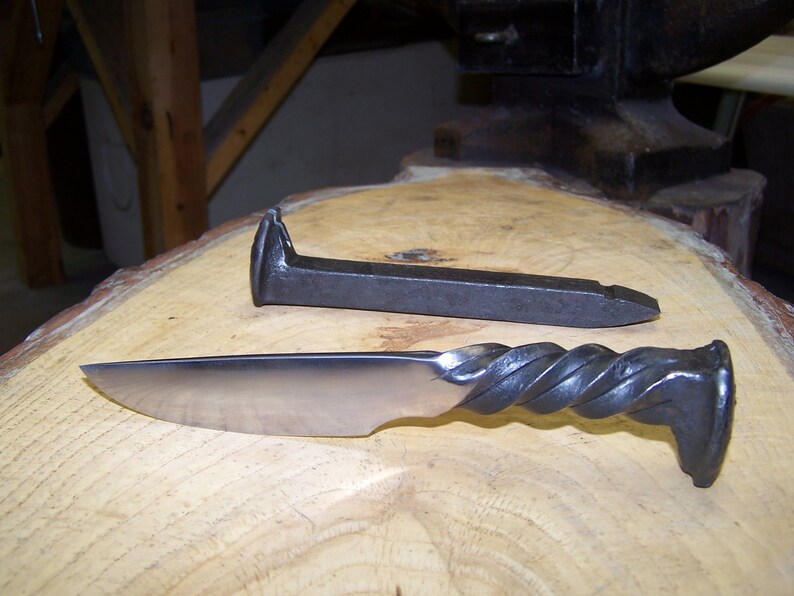

#112.5 TRAIN SPEED RECORD RAILROAD SPIKE KNIFE HOW TO#
Wish I could figure out sending pics and remember how to do it, to send some here. After that I knew I could make the 5 1/2" PAL USN blade on his spike easily. a regular rifleman's long knife with a spike head on it. Couldn't screw up on their family spike so I practiced on mine first, and found that if I fullered the handle area to 1/4"thick x 7/8"wide then made the blade I could get a lot more blade, and my experiment with my spike ended up being an 8" French chef shaped blade, with forged finger guard, pewter bolsters, and ebony scales. Since I had his spike from his father to use I had to see how much blade I could get, past the standard twist handle spike knife so many do. This knife was one that got me onto pushing RR spikes to the limit. The spike he had found while camping as a boy, the hickory was from a great grandpa's old axe handle, and the square nails from the families pioneer era homestead in our area. The plaque was recessed and the cavity got two rare earth magnets and flocking to hold the knife, with room on the plaque for an engraved plate with details of said accomplishments. This one went to a fathers son who was receiving his Navy pilots wings. Also made a plaque and spike knife with blade modeled after a WW II era RH PAL 35 USN utility knife and scales of hickory, with square nails for pins. I make a grenade twist handled dagger with a 7 1/2" blade.

I do enjoy pushing them as far as can be though for fun. They would have been a great knife in the fur trade era compared to stone blades, and mid 50's Rc is what most trade knives were as I understand. That being said they are tough as hell, and who in their right mind would want to carry such a heavy club on a regular basis. 30 %-C they would NEVER be what you would call a hi-performance knife. I've never Rc checked one as they are beveled, and I figured with. Gary - Antley TX Knife and Forge, Groveton Texas In fact the more I learn the more I reailize how much I dont know. I hope this information is usefull to someone. I was supprised at the solid 57 HRC that I am consistantly getting. I have tested several blades expecting to see hardness of 40C to 45C at best. I want to keep all the hardness I can in these blades. If anyone breakes one of my RRS knives I can afford to give them another one. On the last cycle the blade is quickly quenched leading edge down tip point north (for what ever difference that makes) in a stiring fasion in 30 weight ND motor oil.īecause of the lack of carbon in the knife I do not bother drawing these blades. With a torch using the Bill Moran method of heat treating, I thermal cycle the leading edge of the blades three times allow to air cool until the "shadow" moves thru the blade. Really old spikes could be made of anything. From what I’ve researched, the low carbon spikes have been phasing out since the 70’s in most areas in favor of the tougher higher carbon ones. The blades are forged, roughed out and set up. There are two really popular kinds of rail spikes: low carbon and higher carbon. After purchasing a Hardness Rockwell C Tester, my story is changing. I have sold these knives with the understanding they make okay knives not good knives due to the lack of carbon. For several years now I have made knife from old HC or WHC marked railroad spikes.


 0 kommentar(er)
0 kommentar(er)
